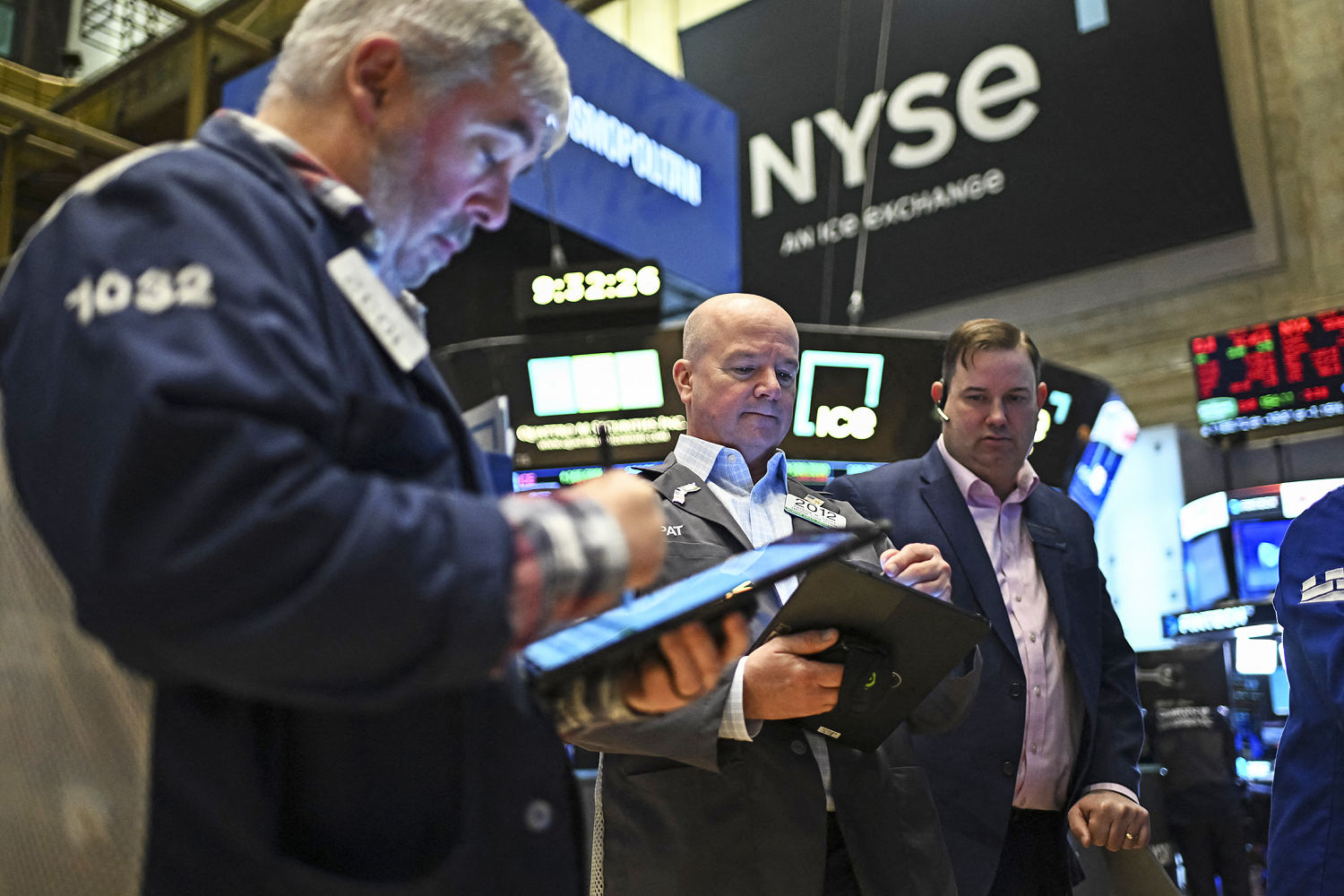[ad_1]

It’s another day with more stocks up than down.
The ratio Friday is almost 3:1, advancing stocks to declining ones on the New York Stock Exchange. It’s 2:1 on Nasdaq.
You’d think with two huge overhangs to the market — Federal Reserve policy uncertainty and tariffs — stocks would be in difficult shape, but that’s not happening.
Tech is lagging. You’d think that with the S&P 500 up 4% on the year, tech would again be the leader, but most of the best performing technology stocks last year are underperforming, with only Meta a strong standout.
- Tesla, down 13%
- Microsoft, down 3.4%
- Apple, down 2.6%
- Alphabet, down 2.1%
- Broadcom, up 0.9%
- Nvidia, up 1.7%
- Amazon, up 4.3%
- Meta, up 25.9%
Instead, the market is continuing to broaden out, though not in a huge way. (That’s good.) The worst performers of last year — materials, health care, energy, real estate, consumer staples — are among the market leaders this year.
Sector leaders in 2025
- Communication Services, up 8.4%
- Materials, up 7.8%
- Health Care, up 6.3%
- Consumer Staples, up 6.0%
- Energy up, 5.2%
- Utilities up, 4.8%
- Industrials up, 4.6%
- Real Estate, up 4.1%
And while the S&P 500 is just shy of a record high, so is the broader Russell 1000.
The average stock is doing fine.
1.) 330 of the 500 stocks in the S&P 500 are up this year — basically two-thirds of the index.
2.) The S&P Equal Weight ETF (RSP) is up 3.6% this year, neck and neck with the S&P 500.
3.) The S&P 500 advance/decline line, after collapsing in December and into mid-January, has recovered and has been sideways for the past few weeks.
Momentum indicators are in a trading range, and that’s not a bad thing.
First, the percentage of stocks trading above their 50-day moving average is at 55%. After falling off a cliff in December and the first half of January (it was as low as 15%), it’s back to where it was in mid-January.
Also, another closely watched momentum indicator, the percentage of stocks above their 200-day moving average, is also at 56%, about where it was after the recovery in mid-January.
For now, that is good enough. “More typical after a peak would be a continued weakening, but not so far,” Frank Gretz at Wellington Shields said in a note to clients today.
Earnings for the fourth quarter have been outstanding, and there is only modest slippage for first quarter and full year estimates.
With 75% of the S&P reporting, fourth-quarter earnings are up 15.3%, according to LSEG. Seventy-five percent are beating estimates — above the average of 67%. And companies are beating by a wide margin: 6.3% above expectations, which is well above the long-term average of 4.2% above estimates.
These are outstanding numbers.
First-quarter estimates, which started 2025 up 12.2%, have slipped to 8.5%. Estimates typically decline in the first half of a quarter as analysts adjust their optimistic estimates downward to respond to the usually more cautious comments from CEOs on earnings calls.
“Cuts to forward quarter estimates are the norm, and the size of cut so far is in line with the historical average at this stage in prior earnings seasons,” Binky Chadha, chief U.S. equity and global strategist at Deutsche Bank, said in a note to clients this week.
For 2025 as a whole, estimates have slipped only modestly, to 11.4% from 14.0% on Jan. 1.
Given these numbers — and the fact that we are just on the edge of new highs on the S&P 500 and Russell 1000 — the market seems to be saying that it is not yet worried about one or no rate cuts this year, nor does it believe that there will be a massive implementation of tariffs. If that were the case, earnings estimates would likely drop into the mid-single digits. That is definitely not priced into the market now.
[ad_2]
Source link


